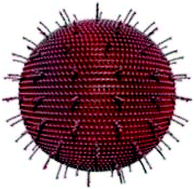Water soluble SERSlabels comprising a SAM with dual spacers for controlled bioconjugation
Abstract
Self-assembled monolayers (SAMs) of Raman reporter molecules adsorbed to the surface of metal

- This article is part of the themed collections: New frontiers in Surface-Enhanced Raman Scattering and Web Collection: Surface-Enhanced Raman Scattering (SERS)

 Please wait while we load your content...
Please wait while we load your content...